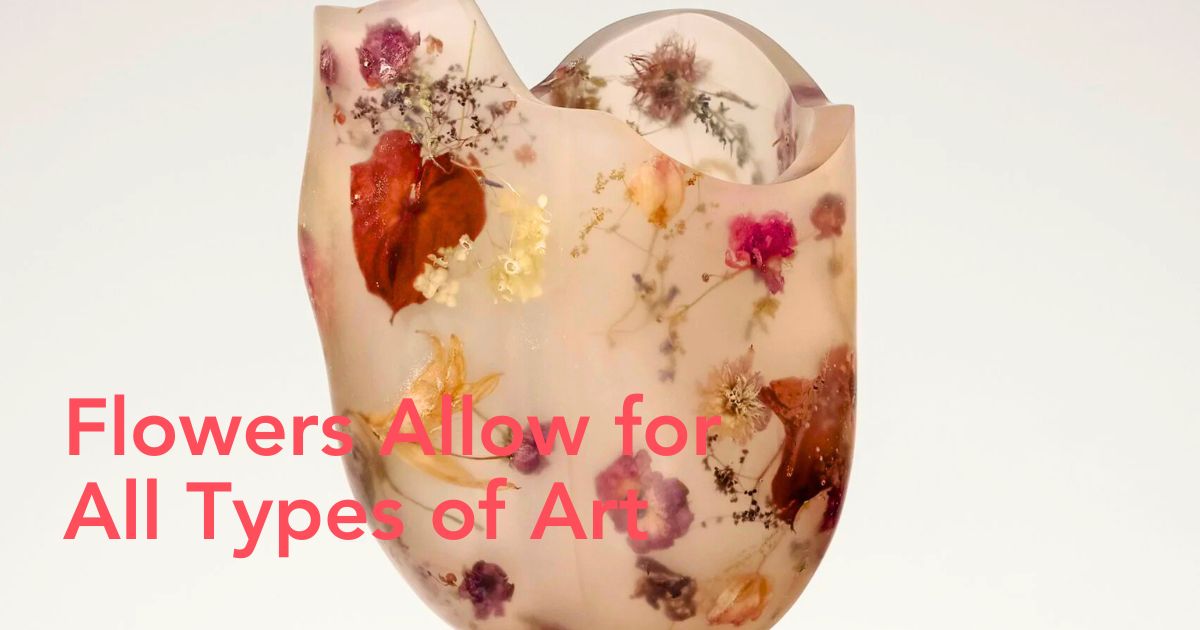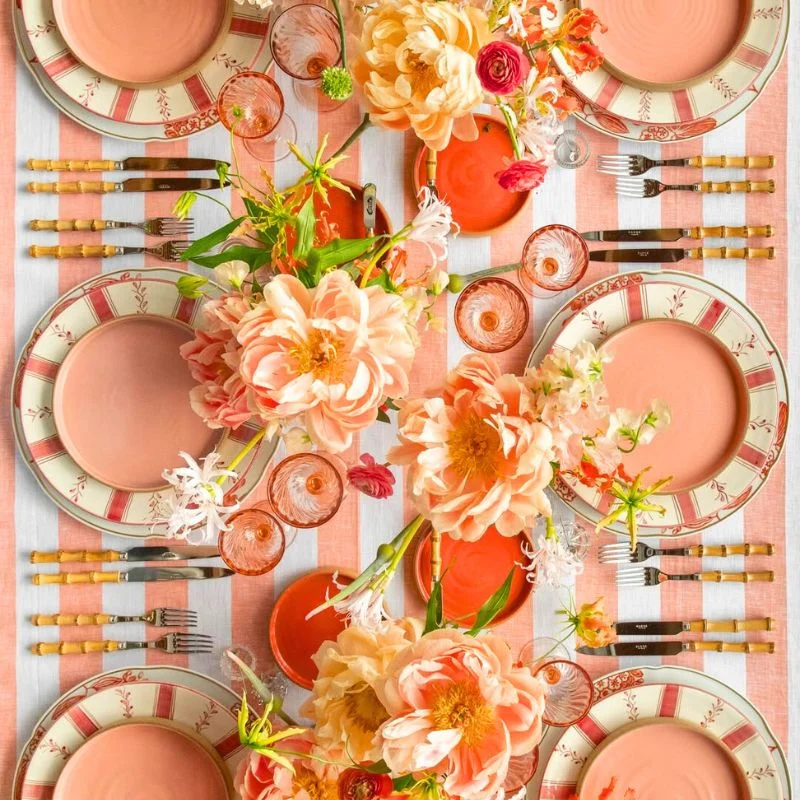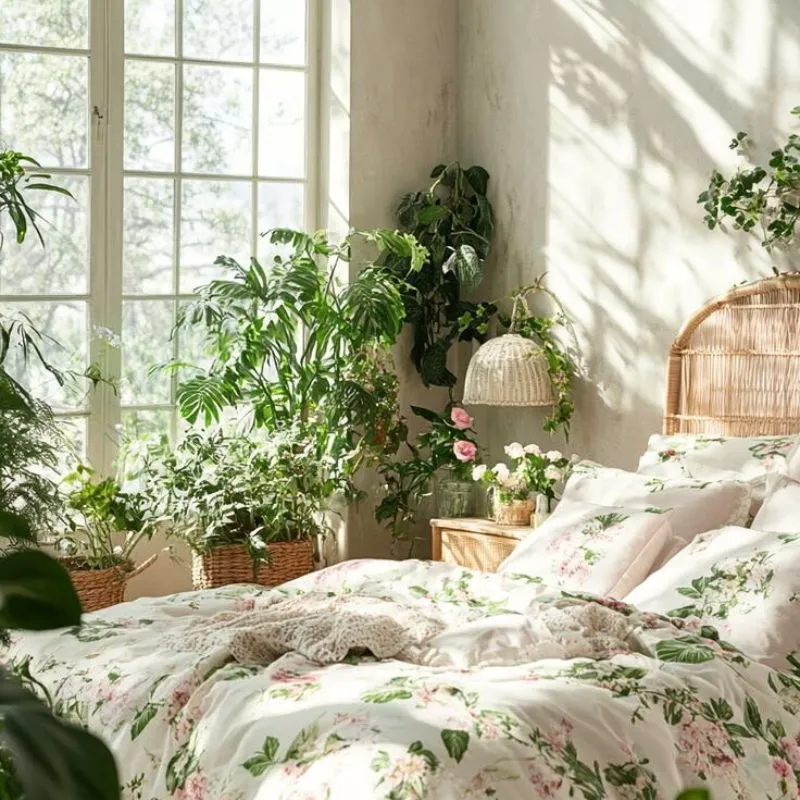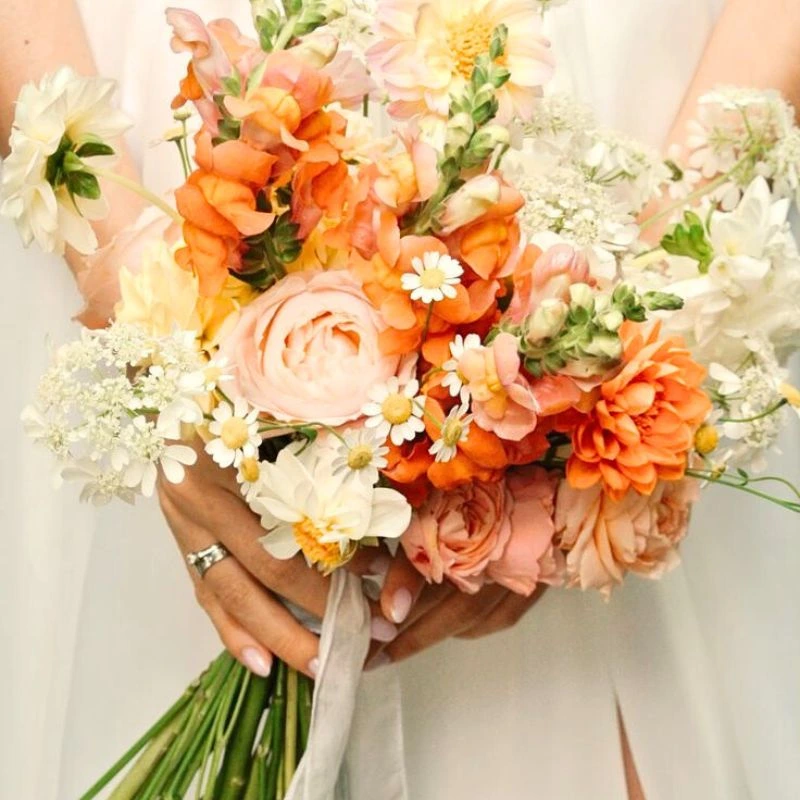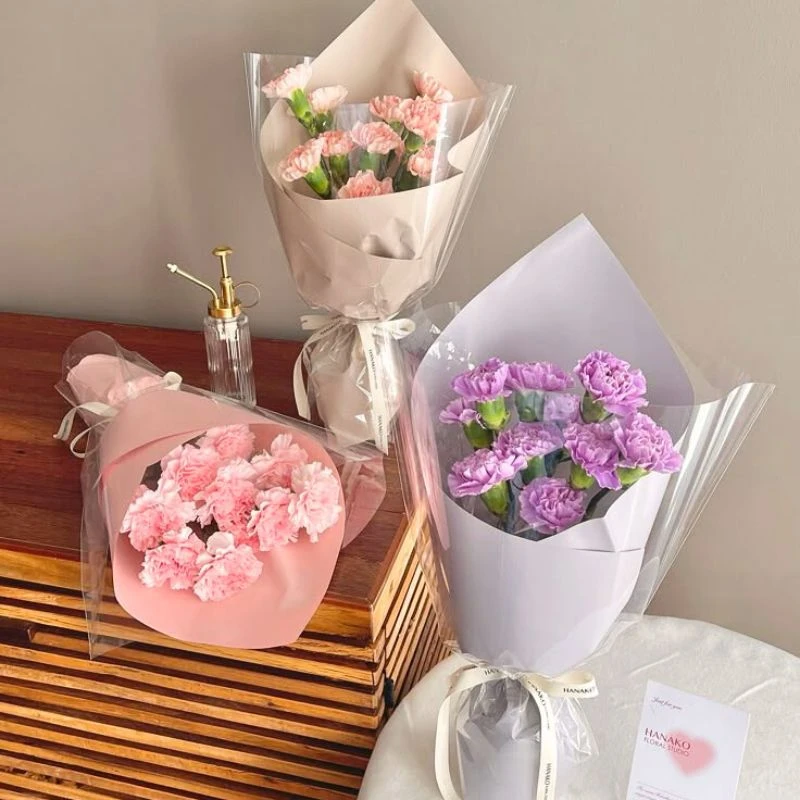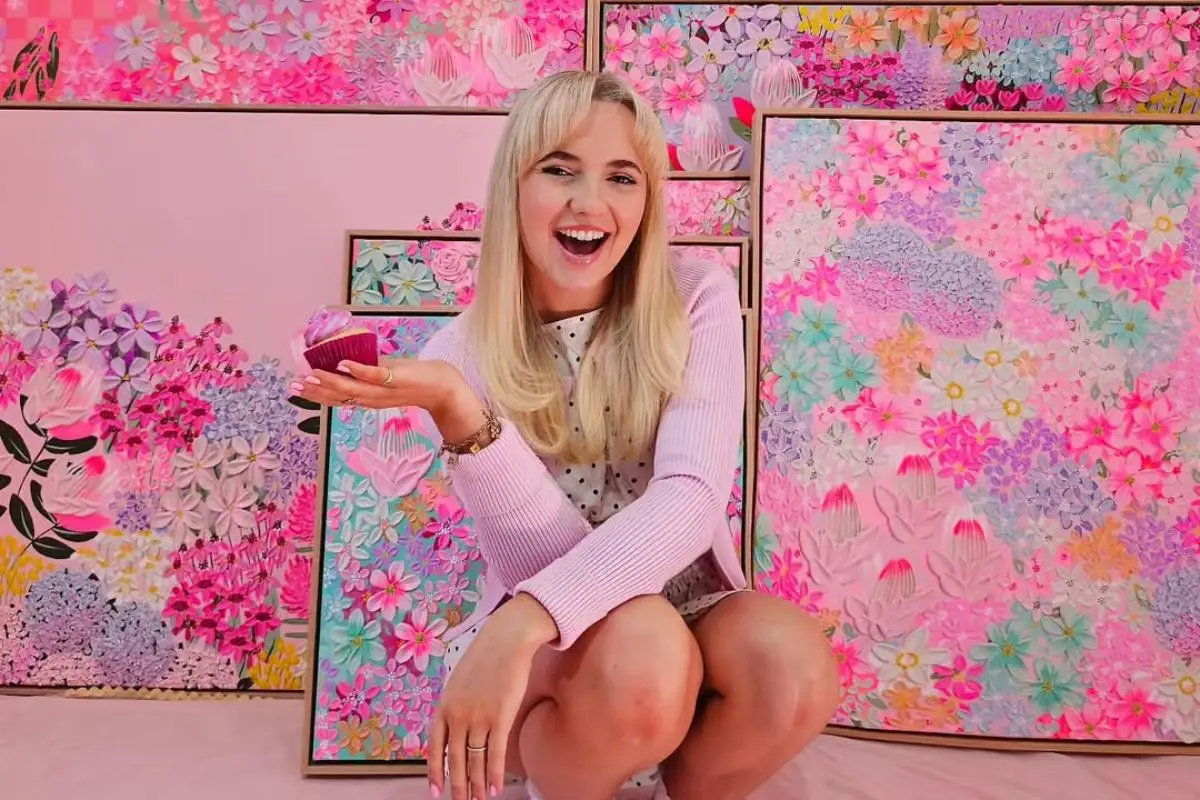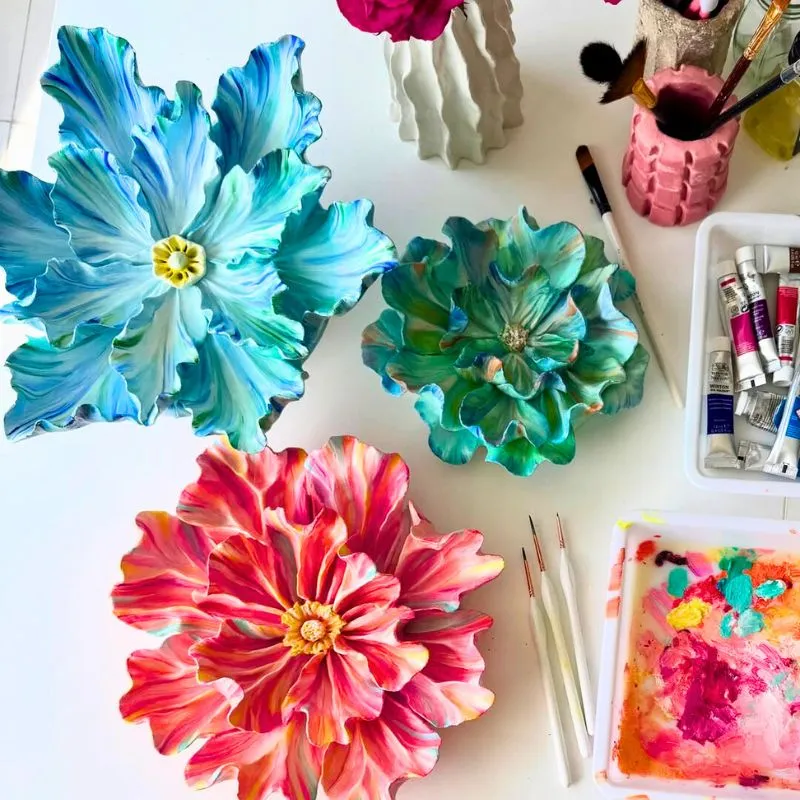Flowers can be used literally for everything and anything, including various forms of creativity and art. In today's edition, designer Marcin Rusak drew inspiration from the landscapes of his native Poland to create a series of tables and vases, made using his signature technique of suspending flowers in resin. Is there anything flowers can't beautify?
Marcin Rusak Captures Untamed Wilderness of Polish Countryside in Floral Resin
As a continuation of Marcin's earlier works, the pieces, collectively titled 'Vas Florum: Resina Botanica', are currently on exhibit at London's Carpenters Workshop Gallery. They are created from organic matter that has been encased in resin. The vessels and tables are different from Rusak's earlier work in that they pay homage to the rivers, meadows, and forests of his native land, even though this material combination may seem familiar.
Flower resin table
Working on the floral resin collection allowed him to reflect on his relationship with nature on a deeper level, as it happens with anyone who is surrounded by nature and flowers. They spike and spark a creative wave like no other. He notices that with time, he has found myself drawn to the untamed wilderness of nature, and he tries to capture this impression in any new body of work that may come to his mind.
The Vas Florum vases are adorned with a profusion of flower inserts, giving them an uneven yet statuesque appearance. Due to their thick packing inside the translucent resin, the flowers resemble still-life paintings in appearance.
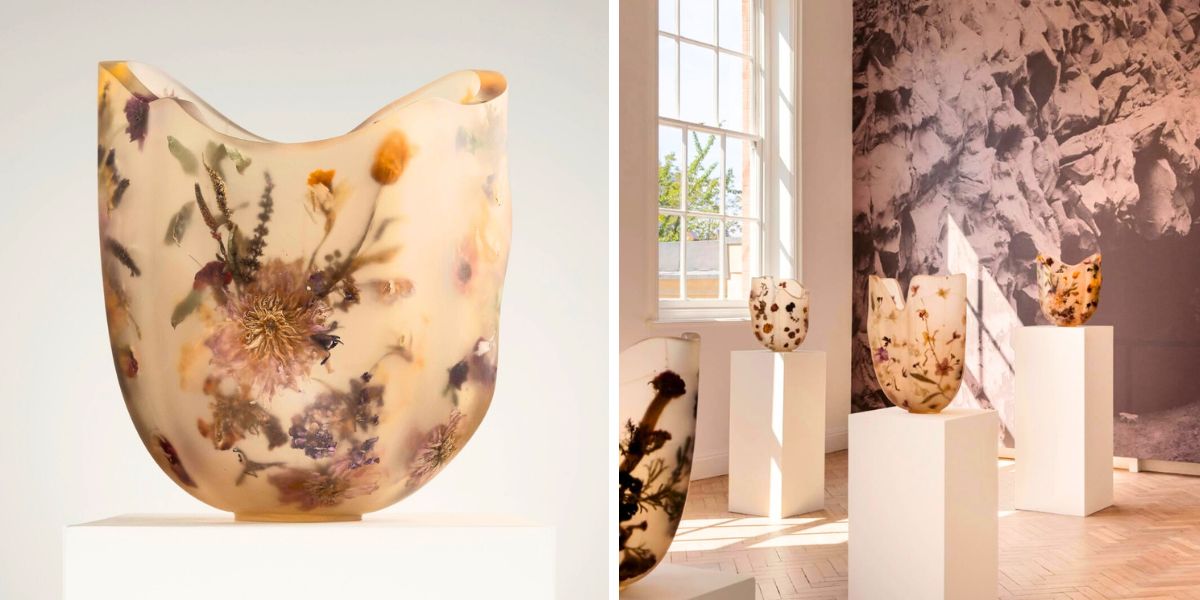
A Baroque Glimpse Into Floral History and Science
Viewers can examine the beauty and significance of the chosen species while learning about the science and history of flower production through the baroque-like compositions, according to Carpenters Workshop Gallery. For each item, Rusak hand-picked several flower species, such as hydrangeas, orchids, carnations, roses, tulips, asters, and daisies. The majority of the botanicals he uses come from unsellable waste from friends of growers and sellers.
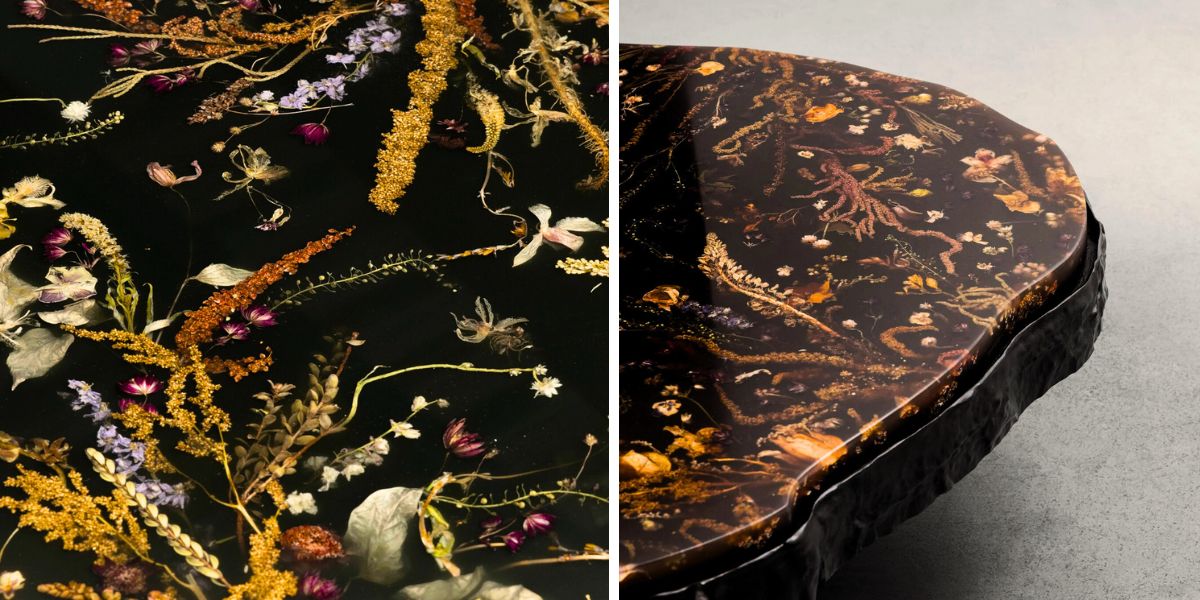
However, he is also interested in sourcing plants specifically with a certain project in mind, studying local, vernacular flora that represents a particular ecosystem. Marcin resorted to lichens and plants for the tables with bronze frames. Their surfaces are made of resin that is tinted dark green and rust-colored, giving the impression that a river is flowing and that flora is floating just beneath it.
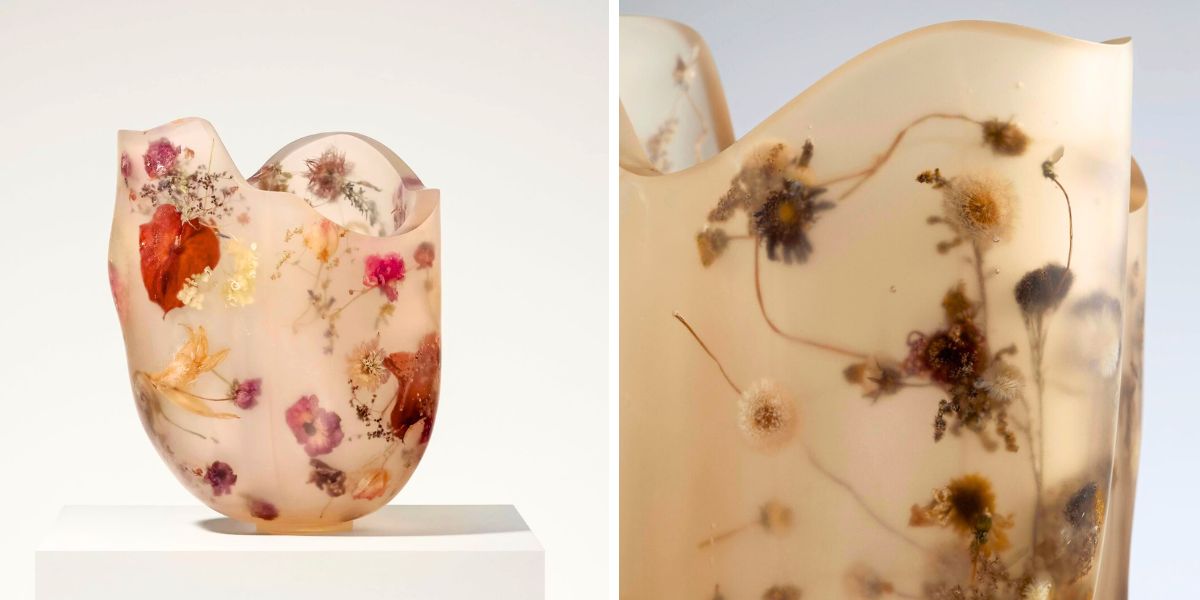
Natural stones discovered in the Solinka River's riverbed in the Bieszczady Mountains Natural Park in Southern Poland served as the inspiration for the tables' asymmetrical designs, the gallery stated. On the other hand, the smooth-polished resin protrudes in a tactile way from the large, flat surfaces of the tabletops, which do not rest flush with the bronze edges.
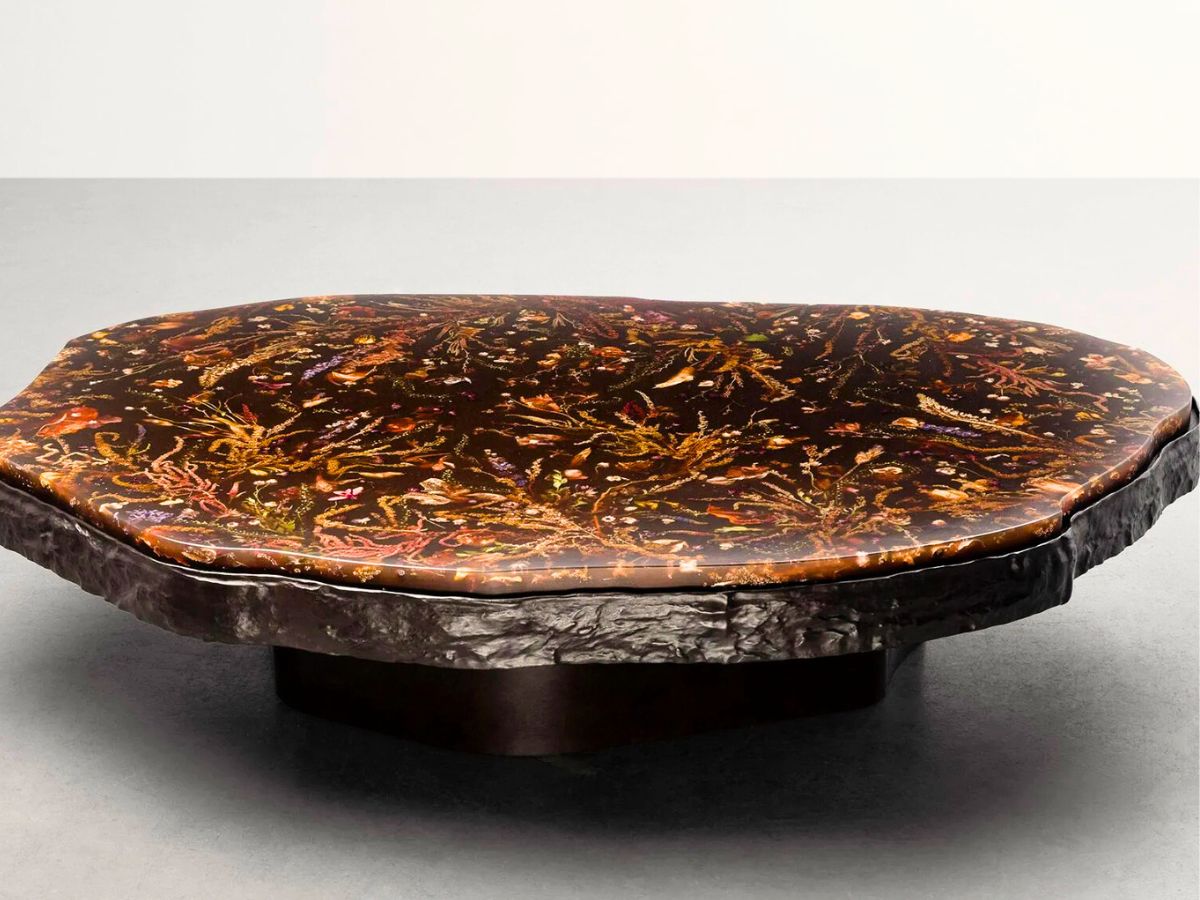
Translating Nature Into Art - The Alchemy of Texture
Vas Florum: Resina Botanica reflects Rusak's focus on the colors, patterns, and shapes found in the natural world, whether in the entanglements of roots and branches that caught his attention in his beloved Polish forests, the sleek surface of a stone in a mountain river, or the abundant varieties of floral species.
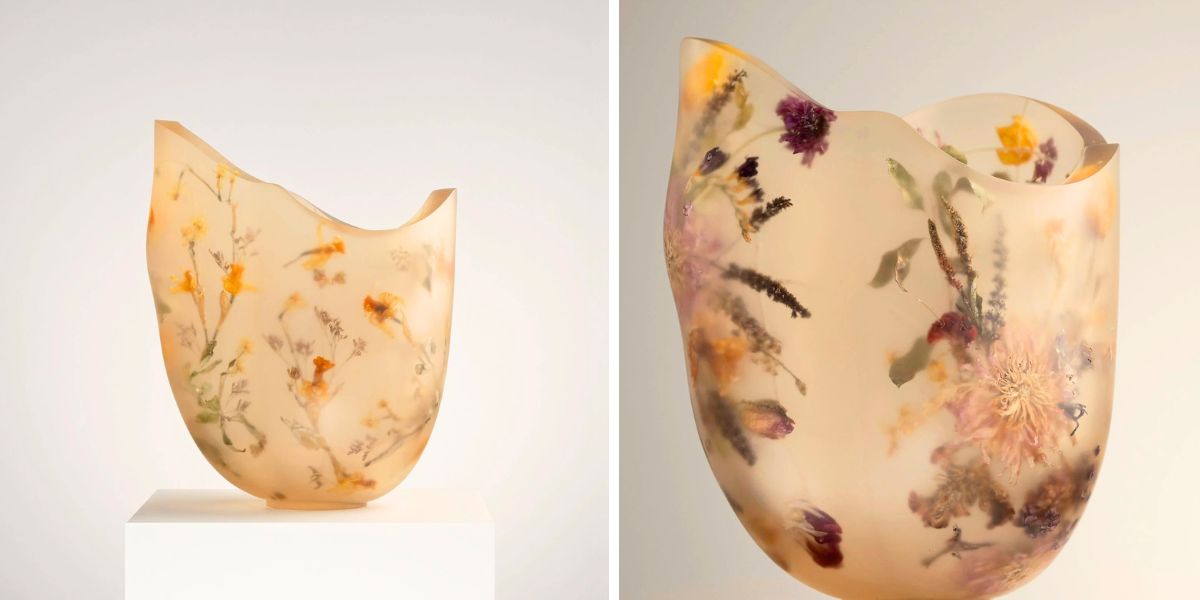
The artist sublimates his impressions of these forms and textures into his works, translating their qualities into the porosity of sanded resin or the coolness of patinated cast bronze. Based in London, Rusak has created resin lights, screens, sideboards, shelving, and benches in the past. If you want to see his full portfolio, you must visit Marcin Rusak's website.
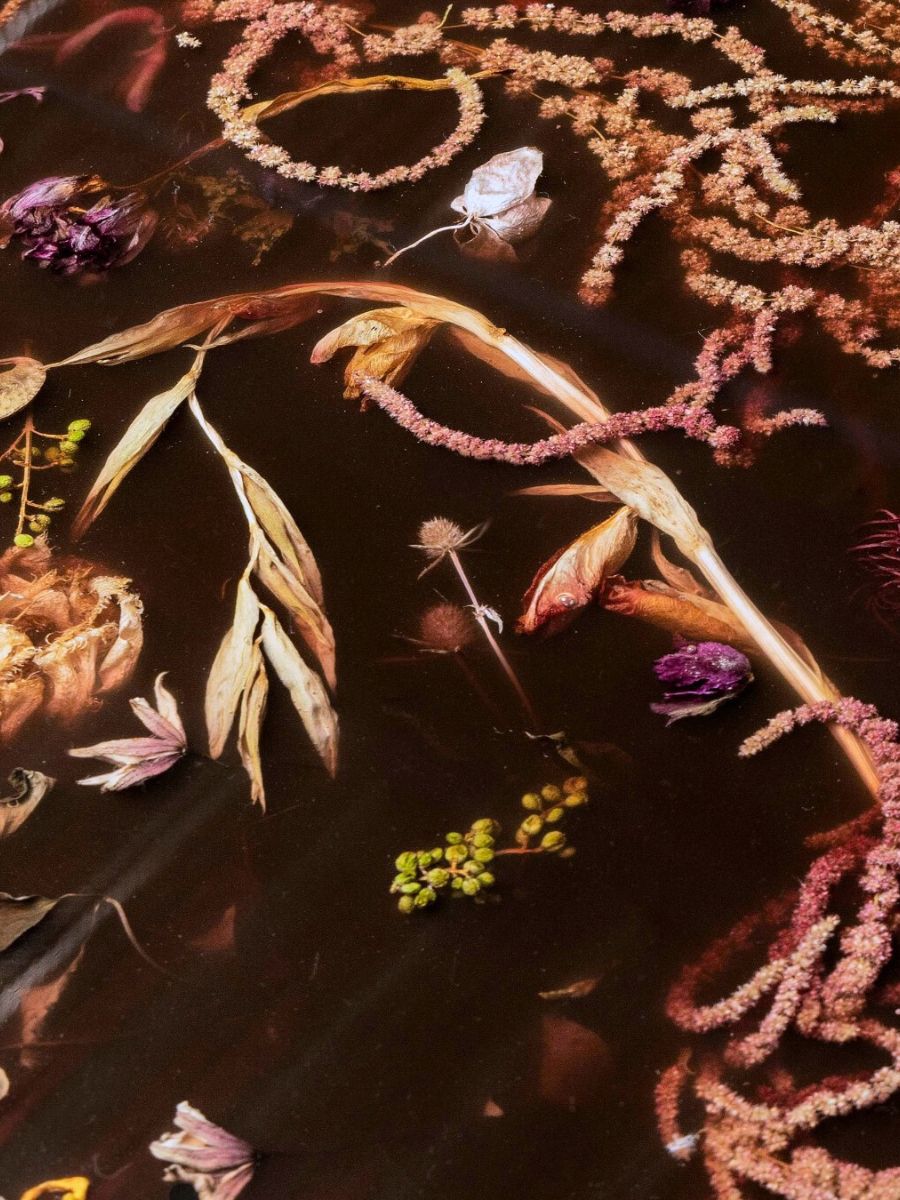
Photos and videos by @marcinrusak and Benjamin Baccarani.

